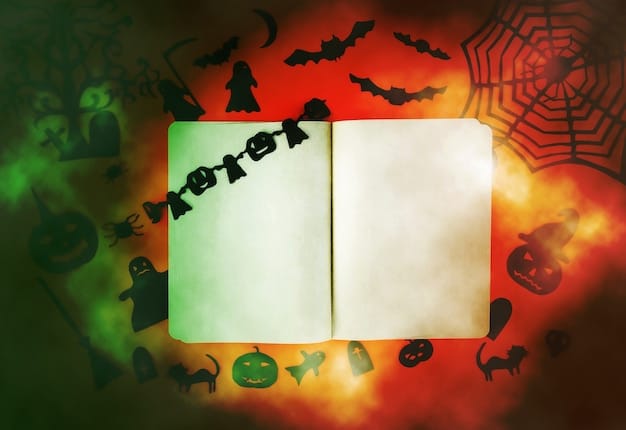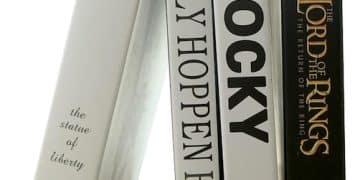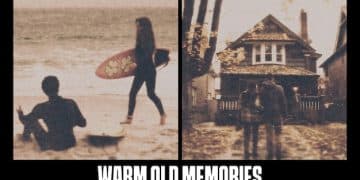From Book to Screen: Best and Worst Movie Adaptations

From Book to Screen: This article explores successful and less successful movie adaptations, highlighting standout examples like “The Lord of the Rings” and “The Shawshank Redemption,” while also examining adaptations that missed their mark despite having great potential.
The journey from book to screen is often fraught with peril, with many beloved stories losing their essence in translation. But some adaptations manage to capture the magic of the original source material, while others stumble, leaving fans disappointed. Let’s explore some hits and misses.
The Allure of Adaptation: Why Books Become Movies
Adapting a book into a movie is a high-stakes endeavor. The built-in fanbase offers potential for box-office success, but also creates intense scrutiny. Why are studios so drawn to adaptations?
The answer lies in a combination of factors, including name recognition, pre-existing storylines, and the potential for tapping into a passionate audience. However, translating the nuances of a novel to the visual medium is no easy task.
Commercial Appeal and Existing Fanbase
Books that have already garnered a large following provide a significant advantage for film studios. The marketing is easier, the audience is primed, and the anticipation is palpable. But this also means expectations are incredibly high.
The Challenge of Translation
The internal world of a character, the intricate plot twists, the subtle prose – these can be difficult to convey on screen. Directors must make choices, often cutting or compressing elements, which can alienate fans of the original book.
Ultimately, the success of an adaptation often hinges on how well the filmmakers understand the core themes and emotional resonance of the source material.
- Maintaining the essence of the story.
- Balancing fan expectations with artistic vision.
- Effective use of visual storytelling.
The industry recognizes that a successful adaptation can lead to franchise gold, driving studios to constantly seek out the next great book to bring to theaters.

Adaptation Triumph 1: “The Lord of the Rings” Trilogy
Peter Jackson’s adaptation of J.R.R. Tolkien’s “The Lord of the Rings” is widely regarded as a masterpiece of cinematic adaptation. The trilogy brilliantly captures the epic scope, rich detail, and emotional depth of Tolkien’s world.
The filmmakers made bold choices but remained faithful to the spirit of the books, satisfying both longtime fans and newcomers to Middle-earth.
Faithful to the Source Material
While some changes were necessary, the core narrative, characters, and themes remained largely intact. Memorable scenes were brought to life with stunning visuals and compelling performances.
Visionary Direction and Special Effects
Peter Jackson’s vision was instrumental in the film’s success. The groundbreaking special effects transported audiences to Middle-earth, making it feel real and immersive.
Sir Ian McKellen, Viggo Mortensen, and Elijah Wood, among others, delivered iconic performances, embodying their respective characters with nuance and charisma.
- Epic scope and breathtaking visuals.
- Strong performances from the cast.
- Faithful adaptation of key plot points.
The Lord of the Rings trilogy remains a benchmark for fantasy adaptations, proving that it’s possible to translate even the most ambitious works of literature to the screen with remarkable fidelity.
Adaptation Triumph 2: “The Shawshank Redemption”
Based on Stephen King’s novella “Rita Hayworth and the Shawshank Redemption,” this film is a testament to the power of hope and the enduring human spirit. The adaptation transcends its source material, becoming a cinematic classic.
Director Frank Darabont masterfully captures the story’s emotional core, creating a moving and unforgettable experience for viewers.
Compelling Storytelling and Character Development
The film’s strength lies in its compelling narrative and well-developed characters. Andy Dufresne and Red are unforgettable, their friendship providing a beacon of hope amidst the bleakness of prison life.
Masterful Direction and Performances
Frank Darabont’s direction is subtle yet powerful, allowing the story and characters to take center stage. Tim Robbins and Morgan Freeman deliver career-defining performances.
The themes of hope, perseverance, and redemption resonate deeply, making it a timeless and universally beloved film.
- A story about hope in the face of despair.
- Excellent character development.
- Memorable performances by the lead actors.
“The Shawshank Redemption” proves that even a relatively simple story can be transformed into a profound and enduring work of art.
Adaptation Triumph 3: “To All the Boys I’ve Loved Before”
Jenny Han’s young adult romance novel found perfect expression in this charming film adaptation. It perfectly captures the lightheartedness and genuine emotion of the original story.
The film’s success lies in its ability to resonate with a younger audience while still offering a heartwarming story for viewers of all ages.
Capturing the Essence of Young Love
The film beautifully portrays the awkwardness, excitement, and vulnerability of first love. Lara Jean’s character is brought to life with authenticity and charm by Lana Condor.
Strong Chemistry and Relatable Themes
The chemistry between Lana Condor and Noah Centineo is undeniable, making their on-screen romance believable and engaging. The film explores themes of self-discovery, family, and the importance of being true to oneself.
The adaptation manages to stay true to the source material while adding its own unique flair, resulting in a delightful and heartwarming romantic comedy.
- Captures the essence of young adult romance.
- Charming performances from the cast.
- Relatable themes of love and self-discovery.
“To All the Boys I’ve Loved Before” demonstrates that even lighter fare can be successfully adapted if the heart of the story is preserved.
Adaptation Failure 1: “Eragon”
Christopher Paolini’s “Eragon” had all the ingredients for a successful fantasy adaptation. But the resulting film failed to capture the magic and complexity of the source material, leaving fans disappointed.
The film suffered from poor casting choices, rushed pacing, and a lack of attention to detail, ultimately undermining the potential of the story.
Poor Casting and Uneven Performances
The casting choices were widely criticized, with many feeling that the actors failed to embody the characters as they were envisioned in the books. The performances lacked depth and conviction.
Rushed Pacing and Plot Deviations
The film attempted to cram too much of the book’s storyline into a short running time, resulting in a rushed and disjointed narrative. Significant plot deviations further alienated fans.
The special effects, while visually impressive, couldn’t compensate for the film’s shortcomings in storytelling and character development.
- Weak character development.
- Poor casting choices.
- Rushed and disjointed plot.
“Eragon” serves as a cautionary tale, demonstrating the importance of careful planning, thoughtful casting, and a commitment to preserving the integrity of the source material.
Adaptation Failure 2: “The Dark Tower”
Stephen King’s epic “The Dark Tower” series is a sprawling saga that blends fantasy, horror, and Western elements. The film adaptation, however, failed to capture the scope and complexity of the books, resulting in a critical and commercial disappointment.
The filmmakers attempted to condense a multi-volume series into a single film, sacrificing crucial plot points and character development in the process.
Condensing Too Much Material
The film tried to cram too much of the book’s mythology into a short running time, resulting in a convoluted and confusing narrative. Key relationships and plot points were either omitted or drastically altered.
Lack of Faithfulness to the Source Material
The adaptation deviated significantly from the books, disappointing longtime fans and failing to attract new viewers. The film lacked the atmosphere, suspense, and emotional depth of the original series.
Despite the presence of talented actors, the film failed to capture the essence of Stephen King’s vision, leaving audiences feeling underwhelmed and frustrated.
- Too much material, not enough time.
- Significant deviations from the source material.
- Failure to capture the tone and atmosphere of the books.
The Dark Tower serves as a reminder that some stories are simply too ambitious to be condensed into a single film, and that faithfulness to the source material is crucial for satisfying fans.
| Key Point | Brief Description |
|---|---|
| 👍 Successful Adaptations | Faithful, well-casted, and capture the book’s essence. |
| 👎 Failed Adaptations | Poorly casted, deviate from the plot, and lose the book’s spirit. |
| 💖 “The Lord of the Rings” | An epic fantasy adaptation done right! |
| 🤔 “The Dark Tower” | A disappointing adaptation that strayed too far from the source. |
Frequently Asked Questions
▼
Successful adaptations generally stay true to the core themes and characters while making necessary adjustments for the screen. Strong casting, good pacing, and a clear vision are essential.
▼
Failed adaptations often suffer from poor casting, rushed storylines, and deviations from the source material that alienate fans. Lack of understanding of the book’s essence is a common issue.
▼
Yes, it’s possible, though rare. Some movies enhance certain aspects of the book or streamline the narrative in a way that makes it more compelling for a broader audience sometimes.
▼
Besides those mentioned, other highly rated adaptations include “The Hunger Games,” “The Princess Bride,” and “The Silence of the Lambs”, showing diversity in successful adaptations.
▼
Filmmakers need some creative license to adapt a book effectively, but too much can lead to a disappointing experience. Finding the right balance is a real key to success.
Conclusion
The journey from book to screen is a tricky one, full of potential pitfalls and the rare, sparkling success. While adaptations like “The Lord of the Rings” and “The Shawshank Redemption” show how it’s done, others like “Eragon” and “The Dark Tower” serve as cautionary tales of what can go wrong.





